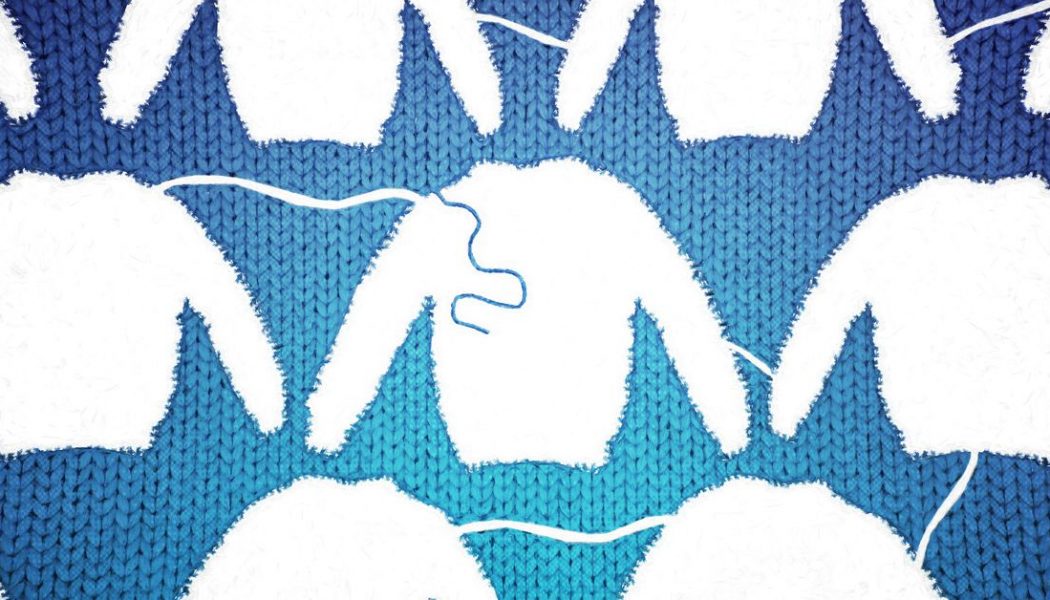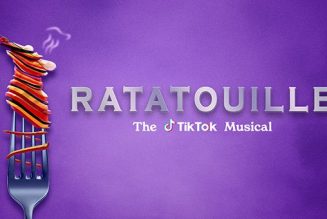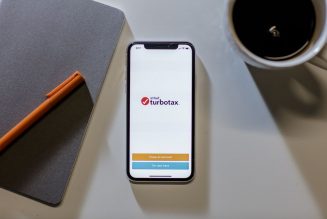
Fifteen years since first learning to knit, Petrina Hicks has only ever made sweaters for other people. There was one cardigan attempt back in 2015, but they had to make so many modifications that the end product was frumpy and ill-fitting. Hicks didn’t have the luxury to be picky: the cardigan was the only sweater pattern they could find above an XL or XXL.
“I want to be a sweater maker,” Hicks said. “I couldn’t find things that were cute. I couldn’t find things that were in my style.”
Hopeful crafters pick up knitting for a variety of reasons: to adopt a slow-fashion wardrobe, to keep stress at bay during the pandemic, or to make the clothes they wish existed, controlling the color and fit to their liking. Ravelry, the largest knitting and crochet site, lists over a million designs — there’s no shortage of patterns to pick from. Unless a knitter happens to be plus size.
People falling outside of straight sizing (generally between extra-small and large) say that even when they want to make their own clothing, their options are limited or they’re outright excluded. But in the last few years, advocacy from within the knitting community — mostly in digital spaces, like Instagram networks — have sparked discussion and action around how to make the craft more inclusive.
Gavriella Treminio is all about coziness. A knitter and designer based in Austin, Texas, Treminio favors simple, monochromatic knitwear, with interesting textures like eyelets and bobbles. Her most popular design, the Simone Pullover, goes up to a 5XL. A plus-size woman herself, Treminio says she wants everyone to feel included.
Knitwear design is equal parts art and math. After creating a sample garment, knitters calculate how the number of stitches at each section of the pattern will change for smaller or bigger sizes. Though it takes a bit of extra work, grading knitwear is typically repeating the same set of calculations. For many plus-size knitters, the size range a designer offers is indicative of how much time they were willing to put in to make their work accessible.
For Treminio, it’s barely an extra effort. “I just don’t understand why some people feel that it takes more work to include more sizes,” she said. “For my Simone, it took probably five minutes to map out the increases after I had my first set of numbers.”
Sarah Krentz, designer and owner of Swanky Emu Knits, produces patterns that forego the idea of sizes all together. Her spreadsheet sizing technique turns each pattern into an instant calculator for the customer. The interactive designs include a few blank spreadsheet cells, in which knitters fill in key measurements like bust, waist, and bicep circumference. The rest of the pattern — how many stitches to increase at the bodice, how many rows to knit before splitting the sleeves — updates automatically using pre-set formulas written by Krentz. No body is too small, too large, or too disproportionately shaped to fit the garments. Krentz also teaches classes for other designers who want to produce patterns using the same technique.
Krentz’s spreadsheet sizing doesn’t force knitters to explain why they deserve to wear her sweaters; a person’s measurements are just a set of numbers. In general, the decision to include larger sizes, she said, is seen as a charitable “extra” to throw in.
“That says something about the choice the designer made,” Krentz said. “Of not wanting someone like me, or not thinking someone like me should or will wear their garment.”
For the past several years, that question of the imagined audience — of what a knitter is supposed to look like — has swirled and at times exploded in the knitting community. Capping a sweater design at a 46-inch bust (an XL, according to Craft Yarn Council standards) sets a visible and quantitative limit to who can wear that pattern. But the industry has a way of asserting other assumptions around race, gender, class, and more, issues that are perhaps imperceptible to those who have always felt welcomed in knitting spaces. Knitters say limited size offerings go hand in hand with issues plaguing the craft, often presented as a hobby for white women.
“You definitely feel the -isms in the knitting community,” Hicks, who is Black, said. “People have their way of making you not feel welcome.”
Narrow size offerings also leave money on the table. Despite the twee, old-timey image prevalent in the general public’s imagination, knitting can be an expensive hobby. A skein of yarn from a big box craft store might only cost $5, but hand-dyed and indie-produced fiber popular in the crafting community could run upward of $30 a skein. A knitter like Hicks who might need 10 to 15 skeins for a sweater is looking at a $300 investment, not including the time it takes to knit the garment.
Excluding entire swaths of potential clientele based on size — not to mention people who might become discouraged from learning to knit — is bad for business. (This holds true in traditional retail, too; two-thirds of American women wear size 14 or above.) But experienced knitters say the failure to include a wide array of bodies in the development of designs also makes the final product’s quality suffer.
Before patterns are published for sale, designers often have test knitting periods, where knitters are hired to essentially beta test the design. They’re asked to comment on the clarity of the written pattern as well as flag any fit issues, like a neck being too tight or forearms coming out baggy relative to the rest of the garment. Because all bodies are different, it helps designers to have an array of people giving feedback. In the past, when pressed to explain why patterns didn’t come in larger sizes, some designers have claimed they didn’t know a plus-size knitter to test knit their garment.
It’s an excuse Mere Conatti had heard too many times. Conatti says she started the Instagram page Fat Test Knits out of spite, after two designers told her they hadn’t created their pattern in her size because they couldn’t find a suitable test knitter. They didn’t have any future plans to include Conatti’s size, either.
“It made me really frustrated,” Conatti said. “I’m thinking, ‘I’m fat and I knit, and I’m telling you I want to give you money.’”
Fat Test Knits serves as a bulletin board that connects designers looking to offer a wider range of sizes with test knitters eager to help them. Conatti, along with another moderator, vets and shares designs that are in development, and followers then contact designers to be included in the testing group. Since 2019, the account has shared over 500 patterns: textured drawstring pants, crocheted bikinis, knit harnesses, and more.
Though the shift is incremental, knitters say the industry is waking up. Some popular designers have updated old patterns to include extended sizes. Others have heeded calls from the public and committed to size-inclusive designs. Conatti says grassroots efforts and independent designers and publishers are largely to thank.
Hicks has christened 2021 as the year they will make their first sweater for themselves, and now feels like there are options. But inclusive size ranges, diverse tester pools and other shifts in knitting are hard-fought wins. Plus-size people are still often forced to ask to be accommodated, rather than be welcomed from the beginning.
“It’s just something I have to do if I want something,” Hicks said. “No one’s going to fight for me as hard as I would fight for myself.”










